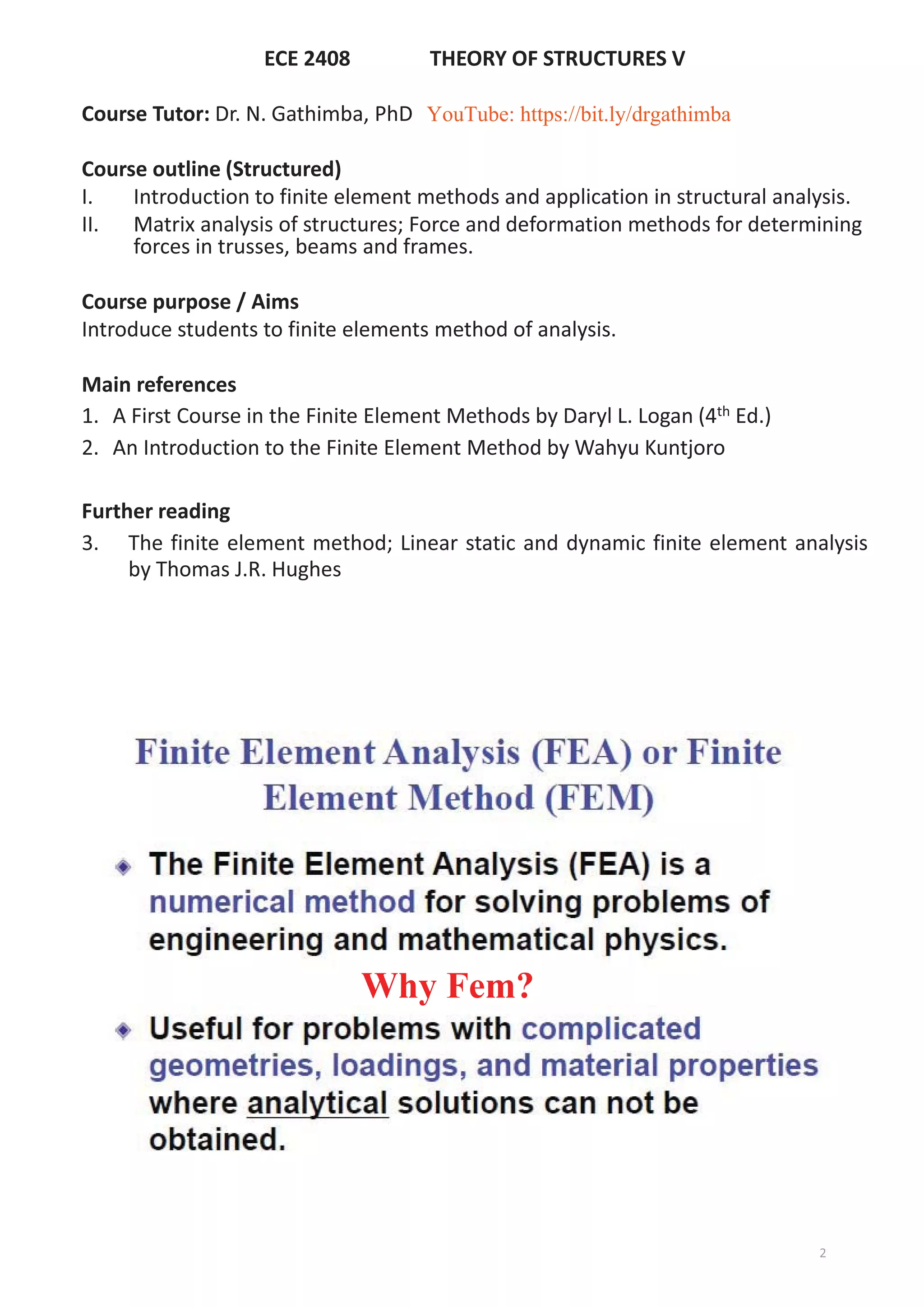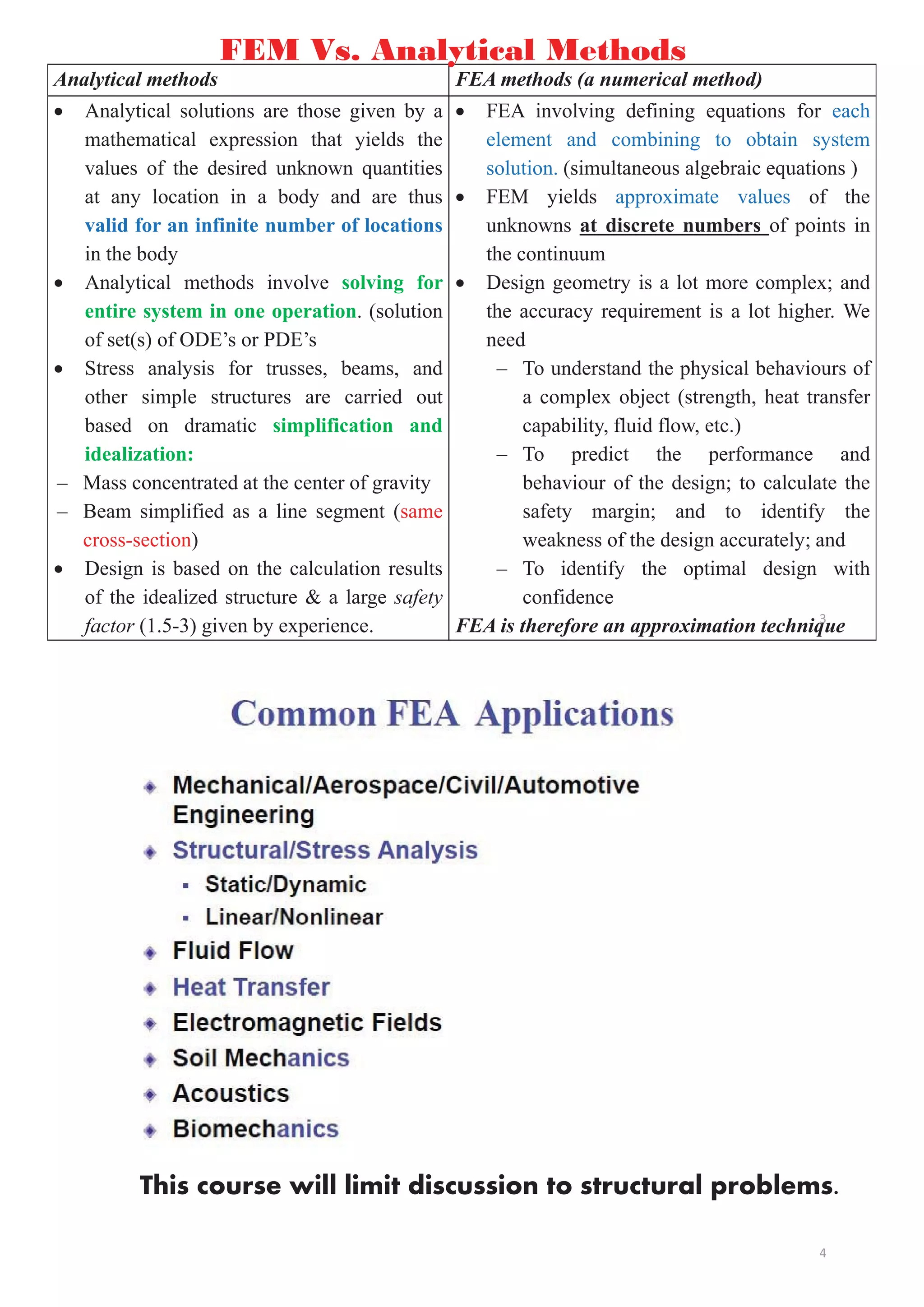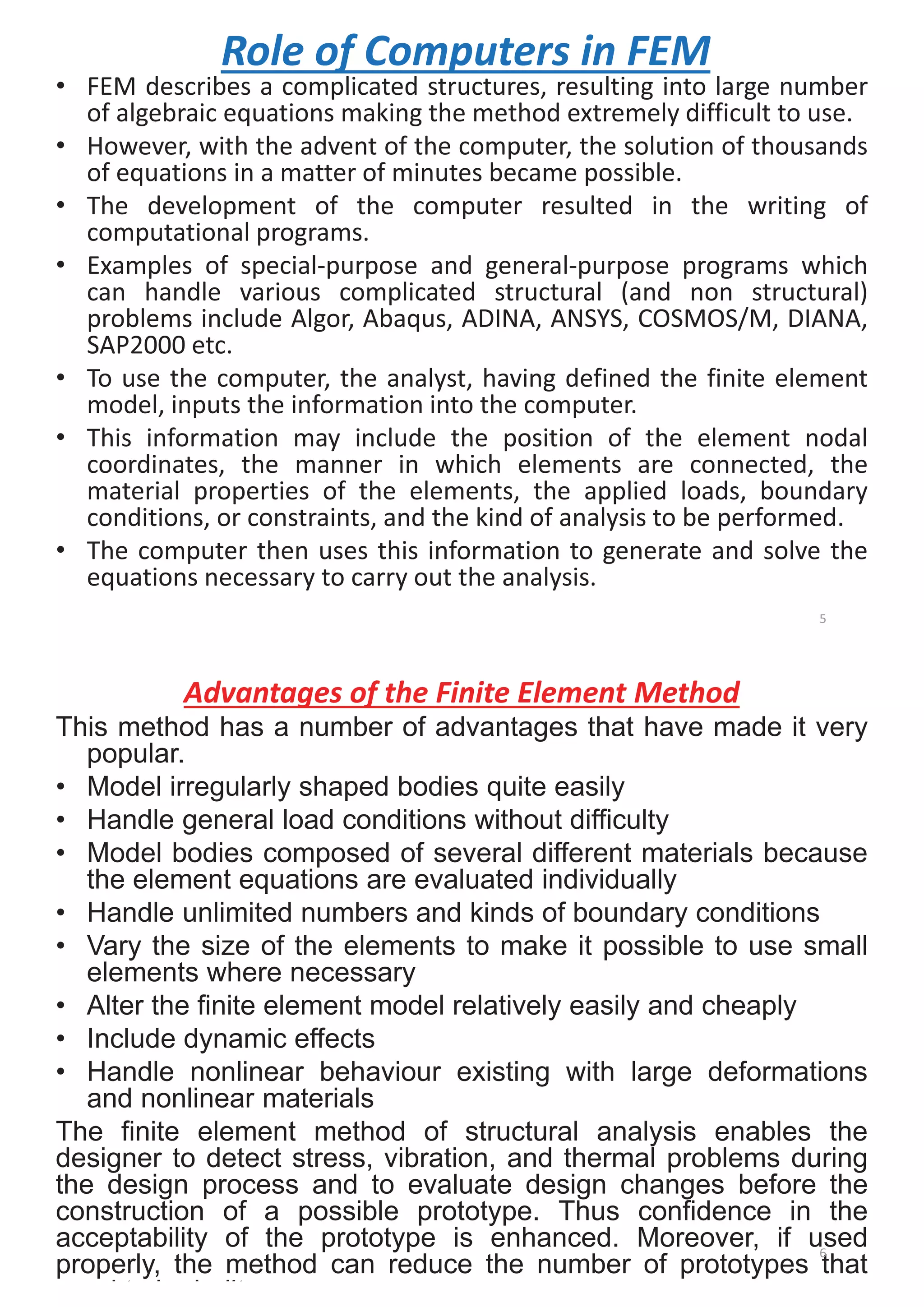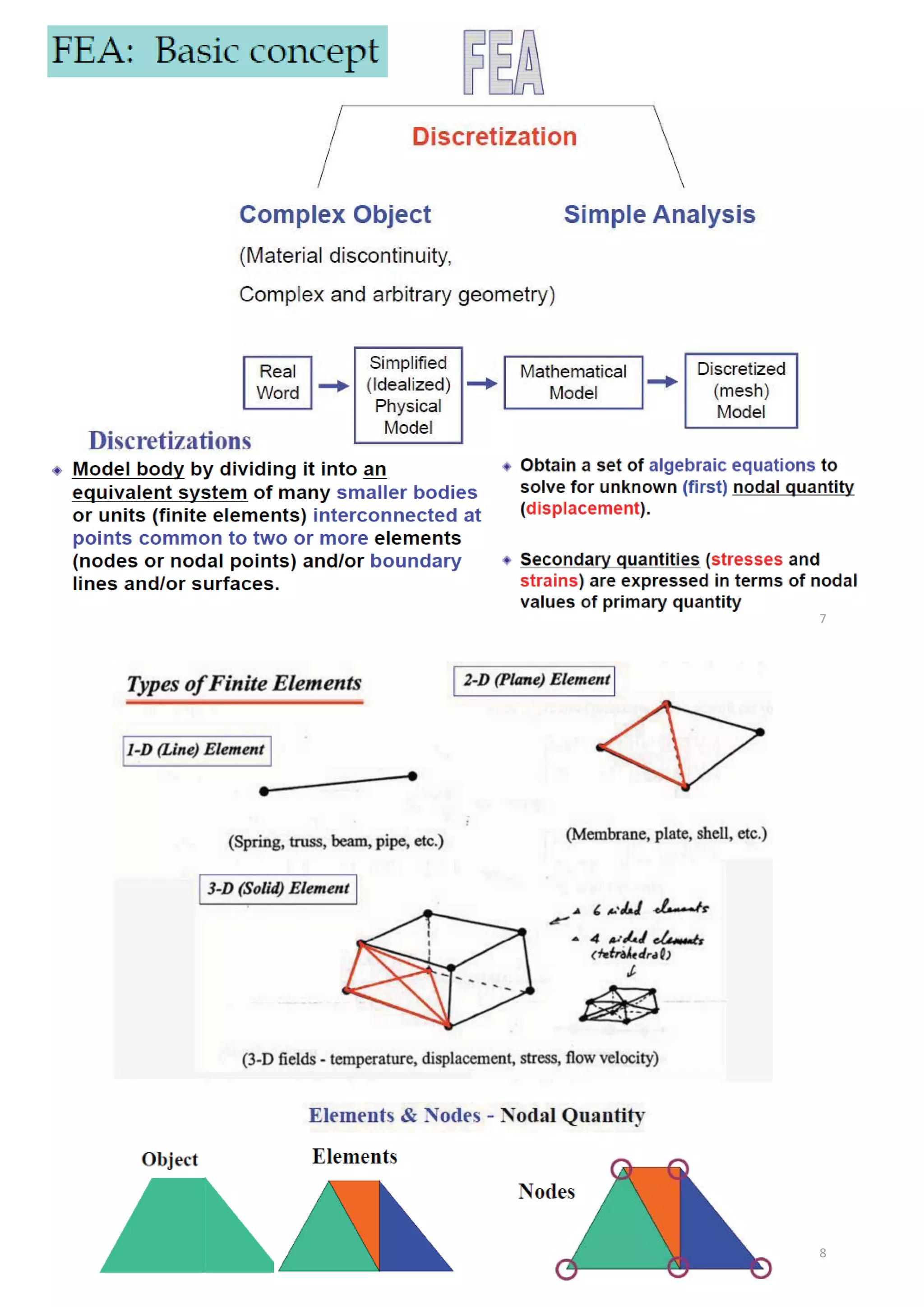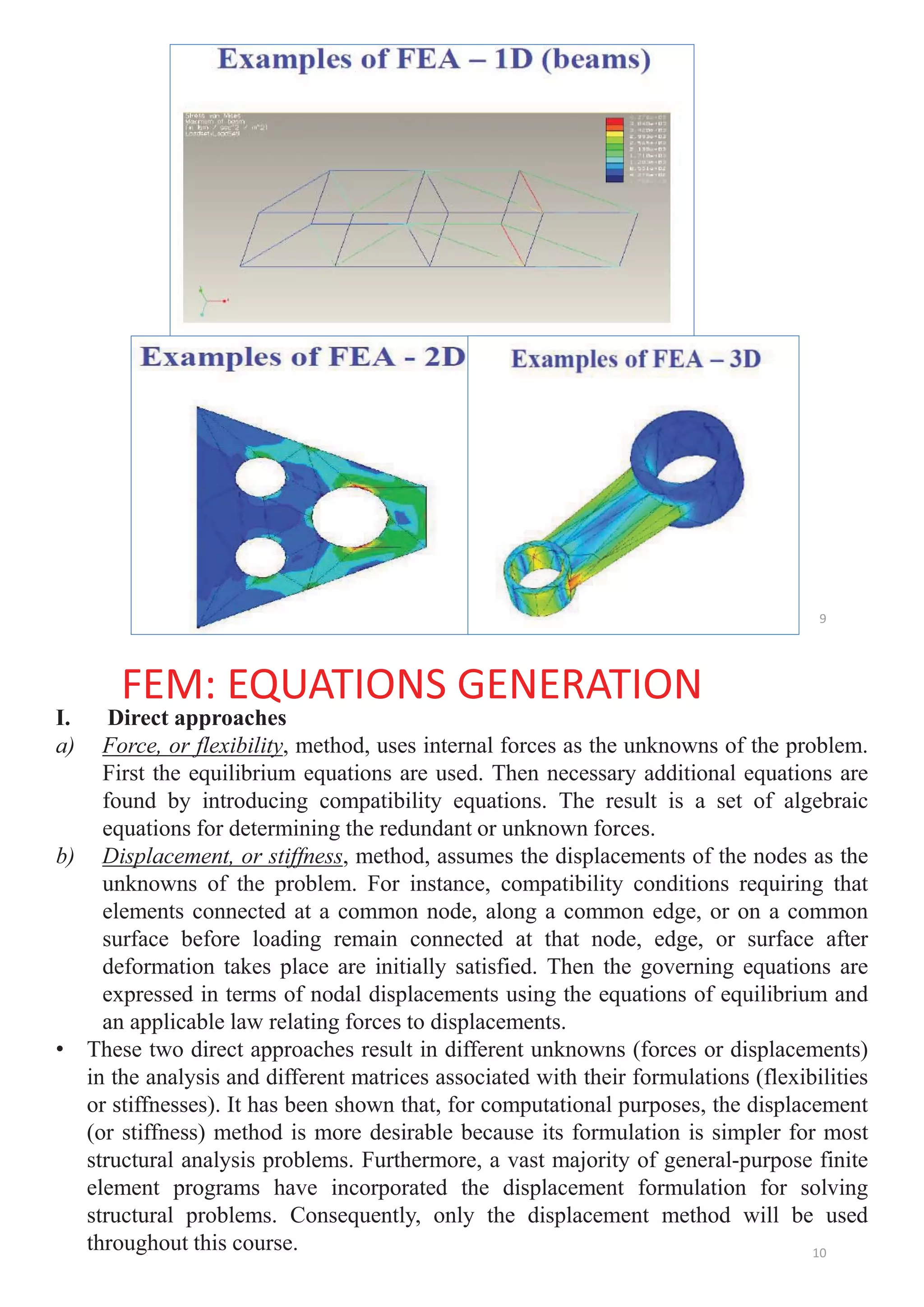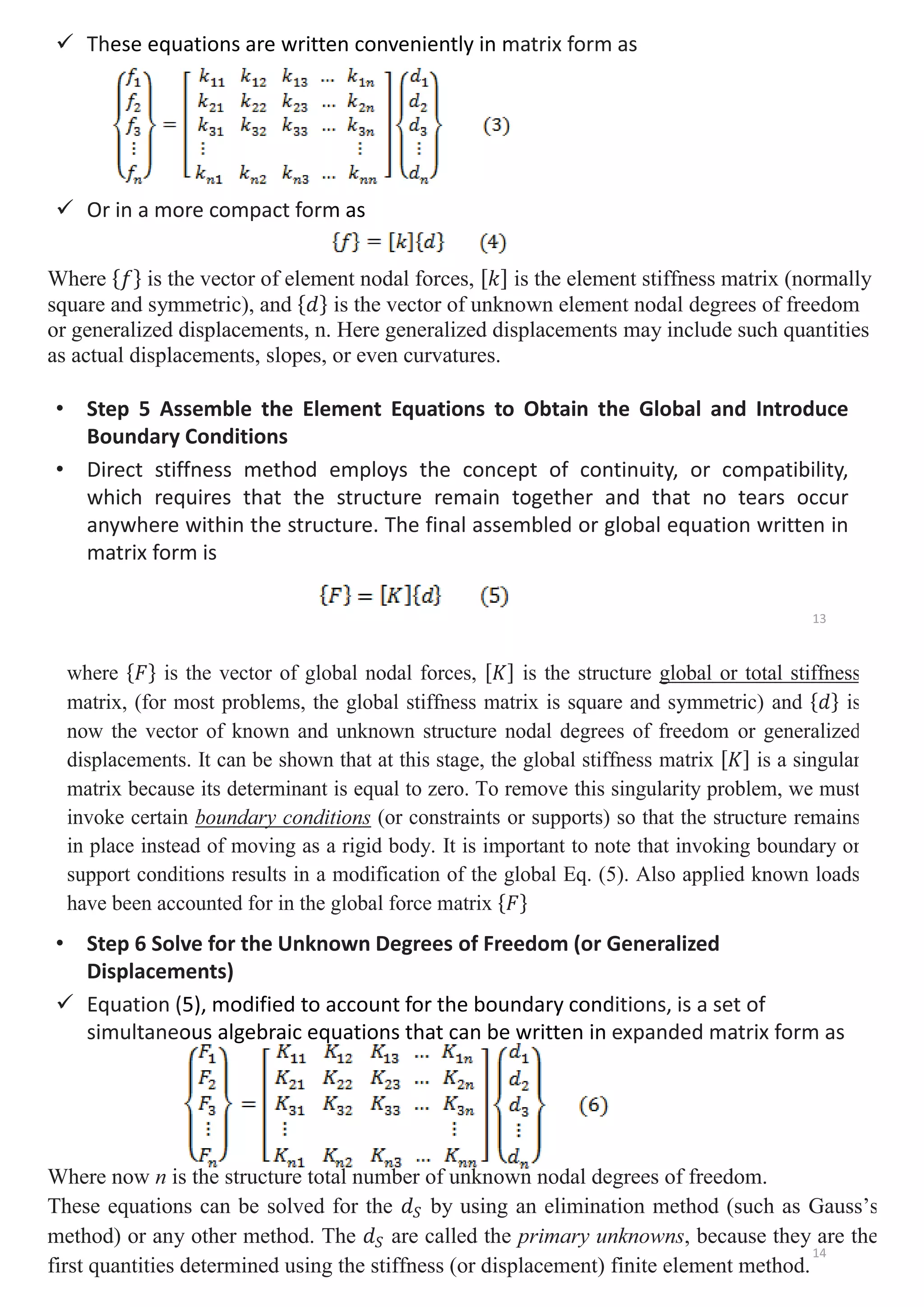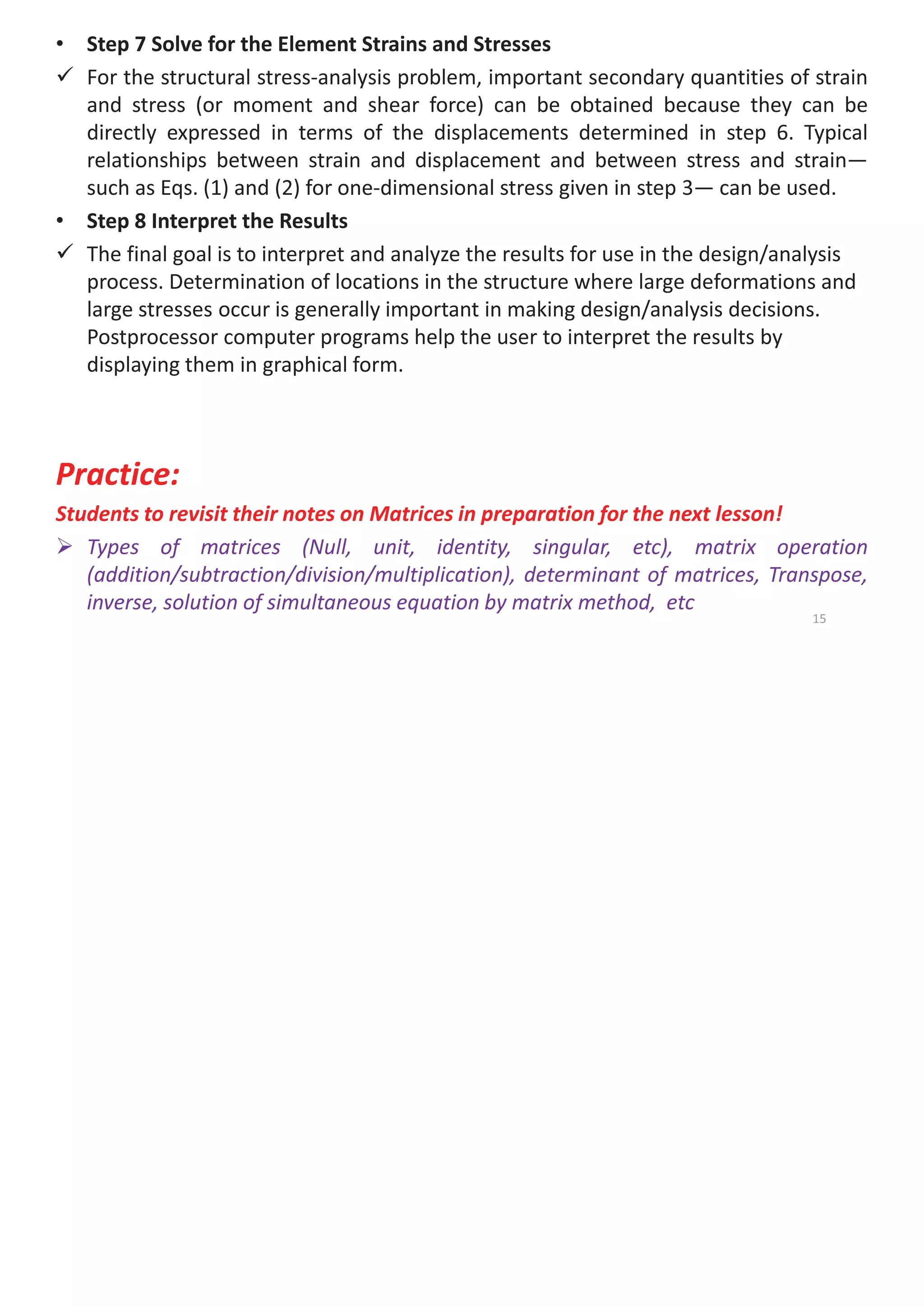This document outlines the course structure and content for ECE 2408 Theory of Structures V. The course introduces finite element methods for structural analysis. It covers matrix analysis of structures, force and deformation methods, and the use of finite element analysis software. The document compares analytical and finite element analysis methods and explains the key steps in finite element modeling and analysis, including discretization, deriving element stiffness matrices, assembling the global stiffness matrix, applying boundary conditions, and solving for displacements, strains and stresses. The course aims to provide students with skills in using finite element analysis for structural design and problem solving.
